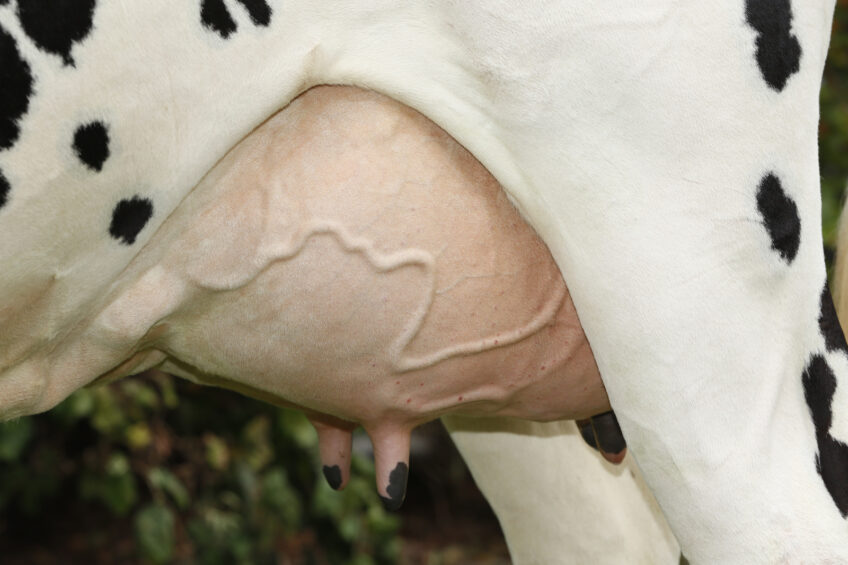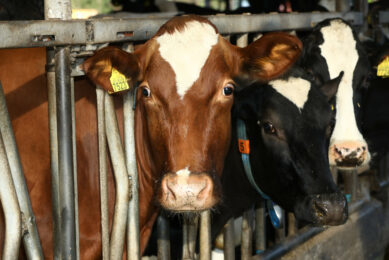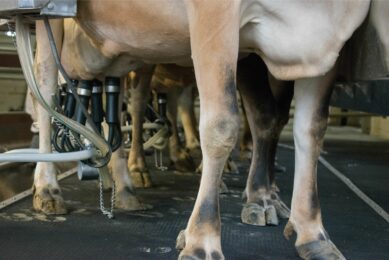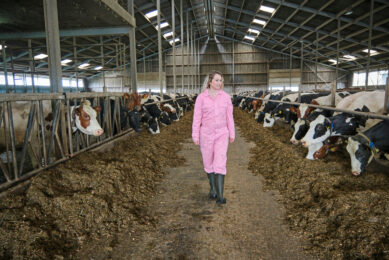Healthy udders ‘special’ at upcoming EuroTier

At EuroTier 2016, taking place at Hanover’s Exhibition Grounds from 15 to 18 November, the ‘Healthy udders throughout the year’ special represents an area of more than 580 square meters dedicated to practical solutions and recommendations for improving udder health.
New health indicators
One of the practical solutions is the use of new health indicators to the German MLP milk recording reports. Also ‘udder healthy animals’ is one of these new indicators. This measure represents the proportion of animals in the herd that meet that threshold (≤ 100,000 cells/ ml). Dairy farms with good udder health should be achieving a figure of more than 60%*. If the proportion of udder healthy animals is too low, or is a showing a tendency to decline, it is an indication that two important management actions need to be carried out: the cows or heifers that are the source of the high cell counts need to be treated, and care must be taken to minimise the risk of new infections.
Measuring success of treatment
Dr Ute Phillip, the director of health and quality assurance at the Thuringian Association of Performance Testing in Livestock Breeding (TVL), says that in conjunction with data on detected udder disease problems, the new figures can be used to show how successful treatments regimes have been. “If you have problems, you can use our on-farm analysis of milk production procedures,” Phillip adds. “Faults that we identify in the milking routine can often be eliminated free of charge.”
Dr Joachim Kleen, a cattle veterinary specialist and consultant at Cow Consult in Uplengen-Jübberde (Niedersachsen) says the new monitoring represents an excellent opportunity to measure udder health and to guide management action. “The figures allow a sober consideration of the situation,” he adds. “If the figures are stable, even with short-term fluctuations, and if the proportion of healthy animals is in the target area, then everything is basically fine, but if the proportion of udder healthy animals falls, we must act.”
Dr Eva Zeiler, director of the Bavarian cattle monitoring project ‘Pro Health’ at the State Institute for Agriculture in Grub, and a practicing vet, says that ideally 75% of the herd have a cell count of <100,000 cells ml in their first lactation and><200,000 in cows with more than two lactations of. “udder sick animals are not only evident in a poorer quality of milk (casein fraction decreases),” she adds, “but also in a reduced milk yield.”>
Improve the price of milk
Hans Eggert Rohwer, a dairy farmer from Neuhörn (Schleswig-Holstein) agrees that the number of udder healthy animals should be about 75%, but he cannot achieve that at present. “It is one of the areas where we could improve the price we get for our milk by reducing the cell count,” he adds, “but with an older herd age profile, it is very difficult to achieve.”
* The following formula is used to calculate the percentage of udder healthy animals in the herd: Proportion of udder healthy animals (%) = a / b x 100
a = number of animals identified in the current MLP report with <100,000 cells ml>
b = number of all lactating animals in the herd
Join 13,000+ subscribers
Subscribe to our newsletter to stay updated about all the need-to-know content in the dairy sector, two times a week.










